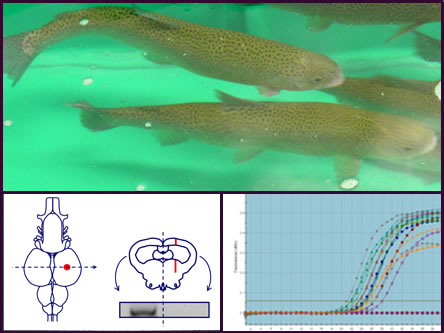
David M. Hollis |
|
|
Research |
|
|
Our lab is focused on genes that code for proteins with known functional roles in synapse development, stem cell proliferation, and the facilitation of axonal outgrowth. Specifically, our lab is investigating the roles of the small molecule GTPase, Rem2, and the membrane-associated lipid phosphate phosphatase, Plasticity-related gene 1 (Prg-1) in brain repair and development. We use the rainbow trout (Oncorhynchus mykiss), and more recently, the bullfrog (Lithobates catesbeianus / Rana catesbeiana), as model systems in the hope of gaining insight into the discrepancies between vertebrates with regard to adult neurogenesis. |
|
|
